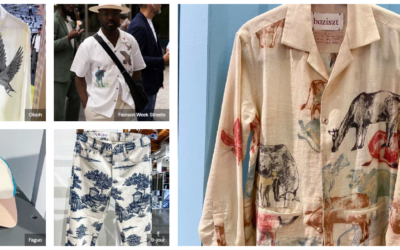Say, you are asking someone- why textiles are important? The most typical answer would be- textiles are important to decorate our homes, prettify our bodies and also for modesty. But the notion of textile in space has not yet surpassed the notion of clothing allowing us to make our own recognition and playing a principal role in cultural rituals and celebrations. The truth is, textiles are now far beyond these primary necessities and are now reigning in space, which gives rise to the concept of Textile in space!
You can also read:
Over the past few decades, technical textile fibers have achieved an undeniable and unavoidable position for textile in space and as a fundamental segment of end product structure. The development in the field of material science has placed an increased emphasis in finding innovative swaps to excel in performance of the existing composites. Lighter weight, comparable in strength with metals, higher strength to weight ratio, modifiable in size, flexible in handling and many more unique characteristics come up with interesting novel applications to textile materials. Therefore, it is not strange to realize the application of a stream of innovative fibrous composition in the space above and beneath the land.
And to talk about human beings reaching the stars, technical textile fibers are one of the core reasons that made this dream possible. In this regard, textile in aerospace is a significant incident now.
Do You Know the Reality Above the Land?
Before knowing the technical textiles associated with aerospace, it is important to know the definition of space and aerospace. As these terms have a strong kinship with textile engineers!
-
Space
A limitless surrounding that, according to modern science, a vacuum extent that is not exactly empty. It contains planets, stars, galaxies and many more particles and plasma matters. Normally, known as outer space, it starts above the earth’s atmosphere. There is no gravity in space, no air, no atmosphere. So, there is no way to resist a very high level of radioactive rays – which are blocked by the earth’s magnetic field- hence, all living things survive. Temperatures there are either hot (such as in case of an explosion of a star) or very cold (nearly -455o F, it’s that cold!). Nonetheless, the human body does not yet have the ability to cope with such extreme environments.
There are so many radioactive rays in space that it is still mysterious exactly what harm they can do to the human body. For this reason, people in space have to wear special clothes which are called space suits. Manufacturing of such garment requires special methods and processes, particular environment is created by controlling the temperature and air pressure – so that people can live in it. And in this regard technical textiles have mind blowing contribution.
The Milky Way Galaxy- shining bright- bearing thousands of wonders! Courtesy: Pexels
-
Aerospace
Aerospace is the branch of technology affiliated with both aviation and space flight. In this era of modern technology, this term is now a common expression. Although, as previously mentioned, the outer space relates to the vacuum environment that goes beyond the earth’s atmospheric levels, aerospace does not only belong to outer space. It also coincides with earth’s atmosphere. The section of technical textiles is rendering great service in this field. By fulfilling all the requirements to ensure the safety of the aerospace connected issues, they become an inseparable part of aerospace. And this amalgamation of textile technology and aeronautical technology has created a new field known as Aerospace Textile!
What Textiles Are Used in Space?
Getting to Know the Features of Textile in Space: Aerospace Textile
Aerospace textiles are obviously something that requires technical or high-performance fibers; these fibers posses certain characteristics that differ from the commodity fibers. These characteristics help enormously for the functions of astronauts, pilots and other professionals. Based on 3D reinforcement, a narrow range of aerospace composites are used for this field. Spontaneously, the curious mind would want to know about the exceptional features to develop aerospace textiles! Here are some key features-
- Good fatigue and stress resistant
- Abrasion and tear resistant
- High specific modulus and strength
- Heat insulation and heat resistant
- Fire retardant
- Good dimensional stability and comfortability
- Resistant to harmful radiation
- Lightweight and flexibility
- Resistant to chemical and organic solvents
- Moisture resistant
- Good electrical insulation
- Adequate washability and durability
The inside of a spacecraft- application of textile materials all around. Courtesy: Unsplash
Materials used to produce the aero-products!
High performance fibers & nano technical fibers with a combination of smart technology are widely used in the production of technical textiles such as: Polyester, Nylon, Dacron, Kevlar, Carbon, Glass, Aramid, Nomex, Spandex, Spectra, Silk etc. There are obviously much more than these. Let’s get to know some of these amazing hairlike materials, shall we?
-
Carbon Fiber:
It is the material consisting of very thin fibers. The diameter ranges from about 0.0002” to 0.0004” and contains mostly carbon atoms as it is produced from the pitch, which is produced as the by-product during the cracking procedure of crude oil. It is similar to graphite in construction as it contains hexagonal graphene layers. The carbon percentage in the composition is almost equal to 100%. Carbon fiber is familiar for its high specific strength in the aerospace industry. Some basic properties are-high tensile strength, lightweight, heat resistant and not attacked by chemicals.
-
Aramid/Kevlar:
Originally introduced by Du Pont in 1973, the Aramid fibers are well known for their good resistance to abrasion, organic solvents and good fabric integrity even at raised temperatures. These fibers are popular under the trade names such as Kevlar. Some of the special features of this fiber are-heat resistant, high modulus, flexibility, non-flammable and low brittleness. All of these features are important for aerospace and aeronautical products.
-
Alumina-Boria-Silica Fiber:
These fibers are ceaseless and are specially designed to pass the FAA’s (Federal Aviation Administration) 2000°F (1093°C) 15-minute flame penetration test. Nextel is a woven ceramic fabric which is one of the most greatly used shielding materials. It is a trade name for Alumina-Boria-Silica fibers, which shock the incoming projectiles and turn them into small, less threatening fragments.
-
Silicon Carbide Fiber:
These fibers are similar to carbon fibers. The tensile strength of the fiber is about 400 kg/mm². It is known for its excellent heat resistance, as it withstands even at temperature as high as 1500°C. Some other useful properties are resistance against corrosive chemicals and elasticity.
-
Nylon Fiber: Nylon 6:6
fiber is made from hexamethylene di-amine and adipic acid. Some basic features of nylon are- high mechanical strength, high toughness, good fatigue resistance, good electrical insulating properties, no resistance to UV rays, lightweight and much more. Interesting fact, nylon is also used for the manufacturing of gear and machine parts!
-
E-Glass: E-Glass or electrical grade glass
was initially evolved for stand-off insulators for electrical wiring. It was later discovered to have excellent fiber forming capabilities and is now used almost exclusively as the reinforcing phase in the material usually known as fiber glass.
-
Graphene: Graphene
is another form of the carbon’s element. Its structure resembles a single layer of graphite. It is an important material for aerospace technology. Some current applications include graphene coating as multi-disciplinary material for spacecraft and aircraft structures, electrically conductive epoxy resins, and aviation electronics.
As we can see, there are several organic and non-organic fibers that are working their magic to ensure the production of aerospace crafts. The covalent bonds among the molecules arranged in an orderly way is one of the greatest compositions these fibers could have. These highly technical fibers are, nonetheless, important for humankind to fulfill their dreams to reach the sky and stars indeed!
You can also read the second chapter of this article here:
By Team Bespoke:
Mentor: Tasphia Zaman (TFD 44, ID: 2018-1-6-009)
Leader: Khadiza Sharmin (TFD 45, ID: 2019-1-6-015)
Executive: Nahema Haque Khushe (TFD 46, ID: 2020-1-6-002)
References:
Image 2: https://www.pexels.com/photo/gray-and-black-galaxy-wallpaper-2150/
Image 3: https://unsplash.com/photos/m9nlI6r1hC8
As you seem to be both tech savvy and fashionista, you will enjoy our premium article on Textile in space: Flying up to reach the stars! This is the second chapter of the article!
To know the biggest fashion trends of 21st century, you can visit here! Moreover, if you want to know the future of fashion industry after Covid-19, you can click here!
And if you want to read one of our premium case studies on Fast Fashion Vs Slow Fashion, you can go here!
You can also read our interesting and well researched article on: Architecture Fabric: The New Use of Textiles as A Building Material




It’s really informative and fun reading.